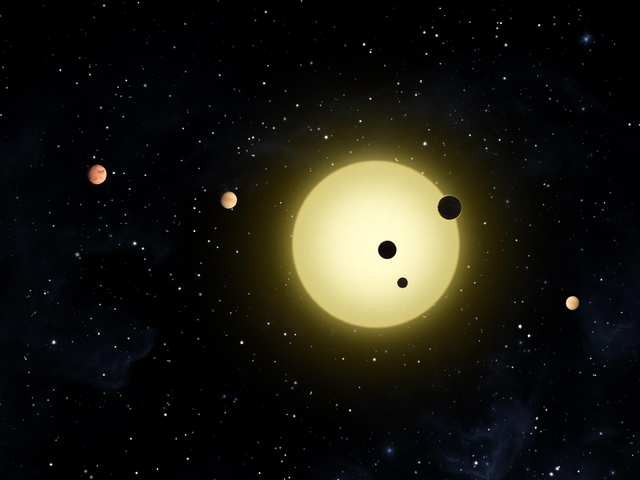Of all the planetary systems in the Milky Way galaxy, our Solar system is quite unusual
The new research has implications for understanding how planetary systems form.

If you are asked to imagine what a typical planetary system looks like, you will most likely picture something similar to our own solar system. However, new research suggests that our small corner of the galaxy may be more unusual than we thought.
The findings have led researchers from the Université de Montréal (UM) to conclude that most planetary systems have a very different evolutionary history.
Lauren Weiss and her colleagues from UM, examined 355 multi-planet systems between 1,000 and 4,000 light-years from Earth, which host a total of 909 exoplanets.
They found that most exoplanets orbiting the same star tend to be the same size as their neighbours and also have regular spacings between their orbits, unlike our solar system. Their findings are published in The Astronomical Journal.
"The planets in a system tend to be the same size and regularly spaced, like peas in a pod," said Weiss. "These patterns would not occur if the planet sizes or spacing were drawn at random."
The new research has implications for understanding the formation of planetary systems. Current scientific theory dictates that planets form in a disk of dust and gas which orbits a newly formed star, often in compact configurations with smaller sizes and regular orbital spacing.
But in our solar system, the inner planets have unusually large spacings and are diverse in size. A possible explanation for this is that early in the solar system's evolution, Jupiter and Saturn disrupted its formation, resulting in the four-widely spaced terrestrial planets – Mercury, Venus, Earth and Mars.
The regular spacing and similar sizes of most exoplanets in the same star system suggest that, perhaps, they have been mostly undisturbed since their formation.
The latest study analysed exoplanets discovered by Nasa's Kepler Telescope which, since launching in 2009, has identified 2,341 confirmed exoplanets.
However, Kepler has only spotted planets in orbits fairly close to their star. The data tells us very little, about what planets, if any, exist at larger orbital distances. In order to address this, Weiss is conducting a new study to search for Jupiter-like planets in these systems.
Research such as this could help scientists to understand which stars could host terrestrial planets that are suitable for life.





















